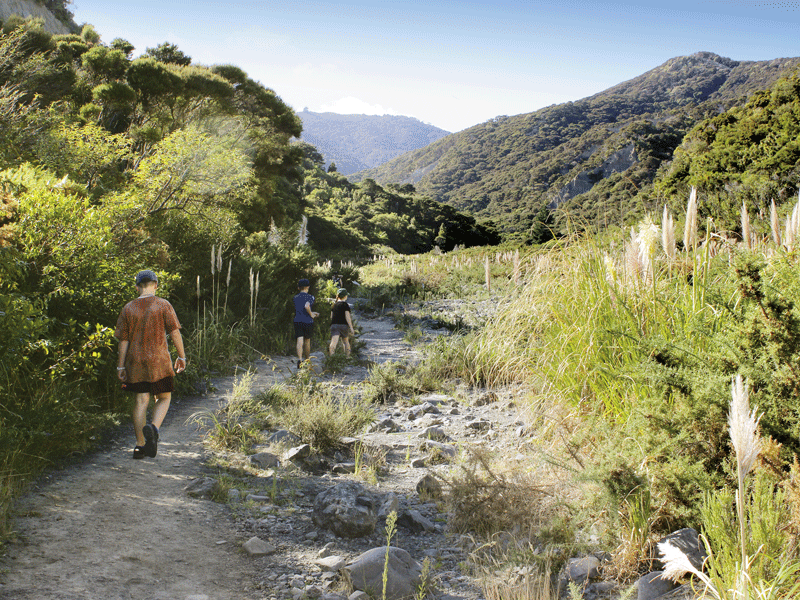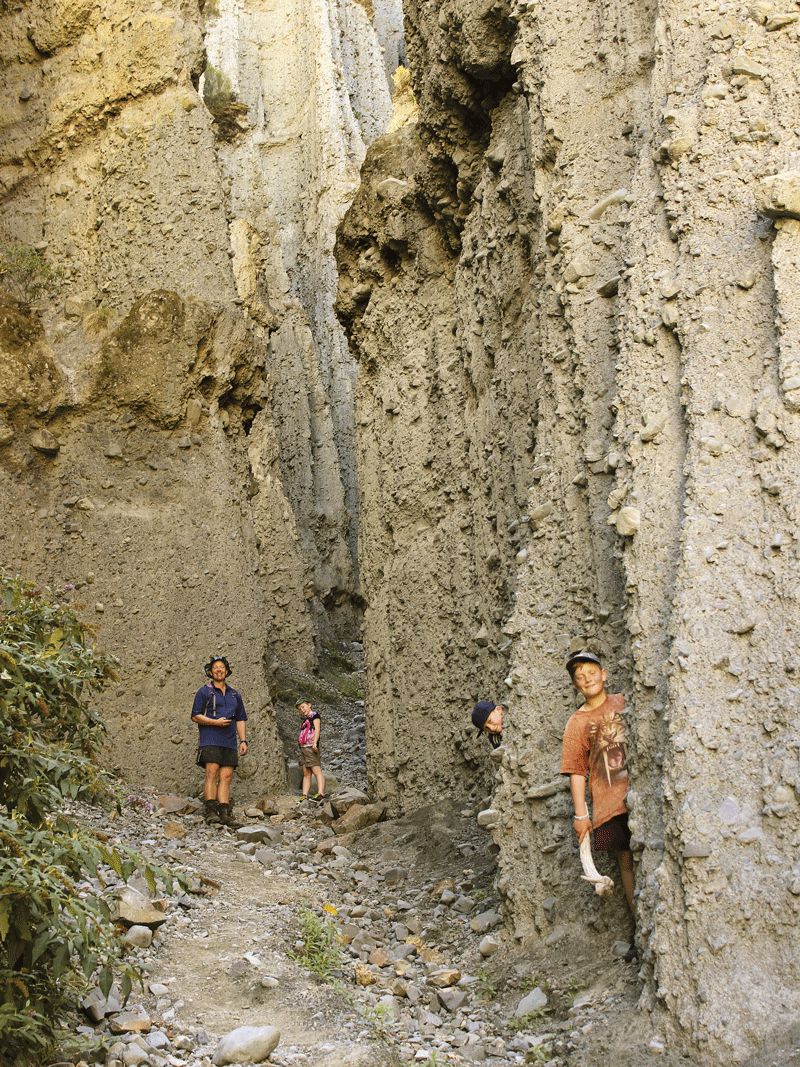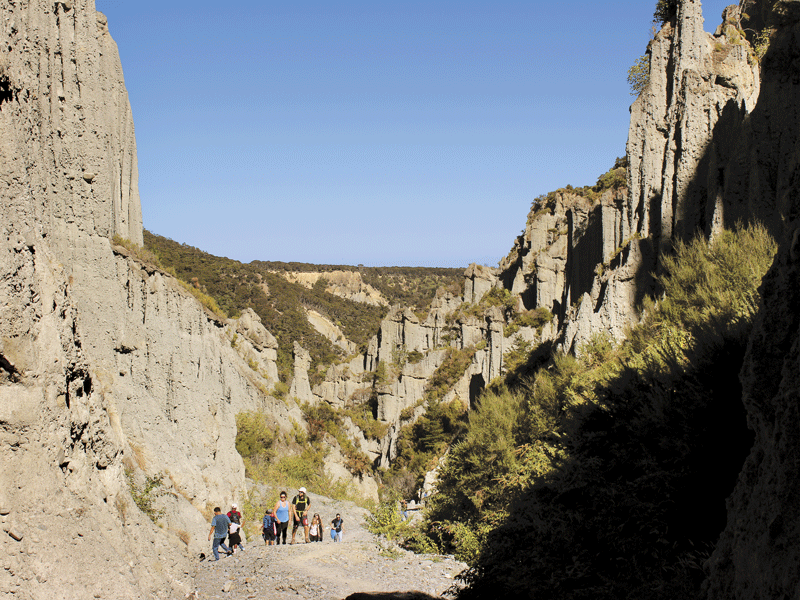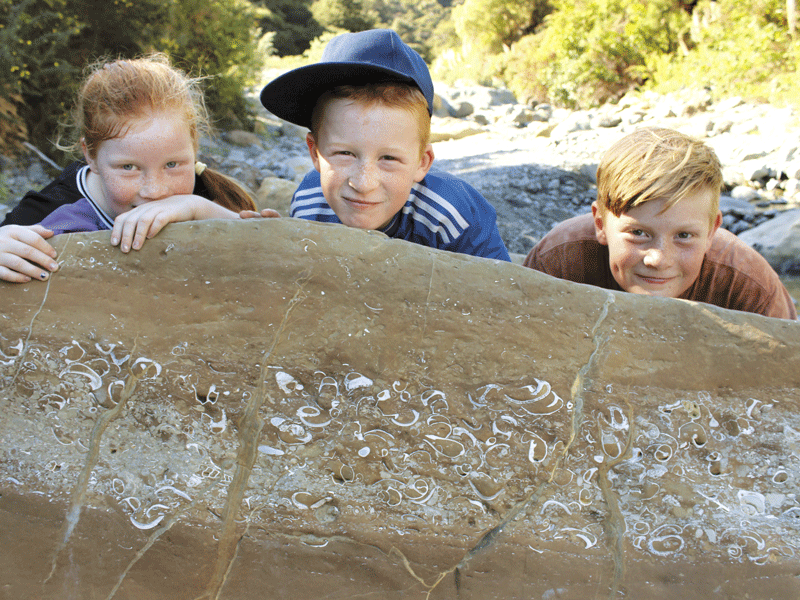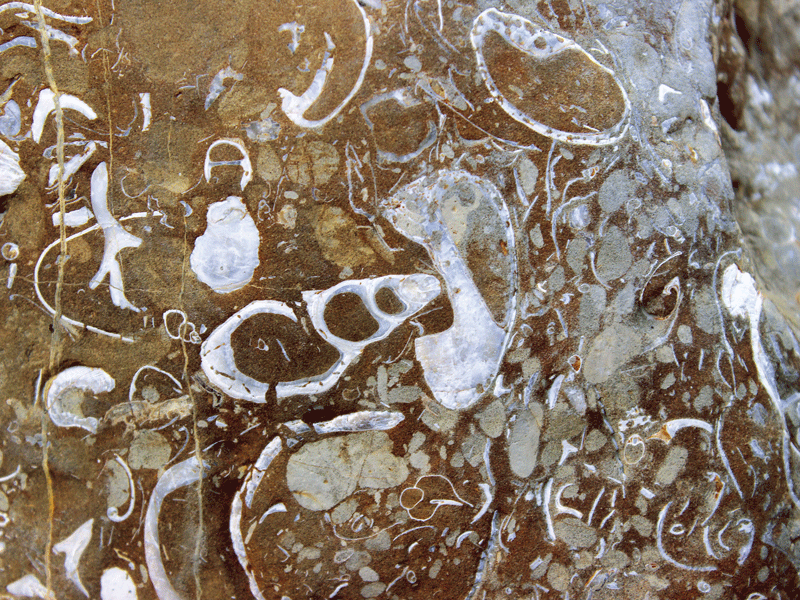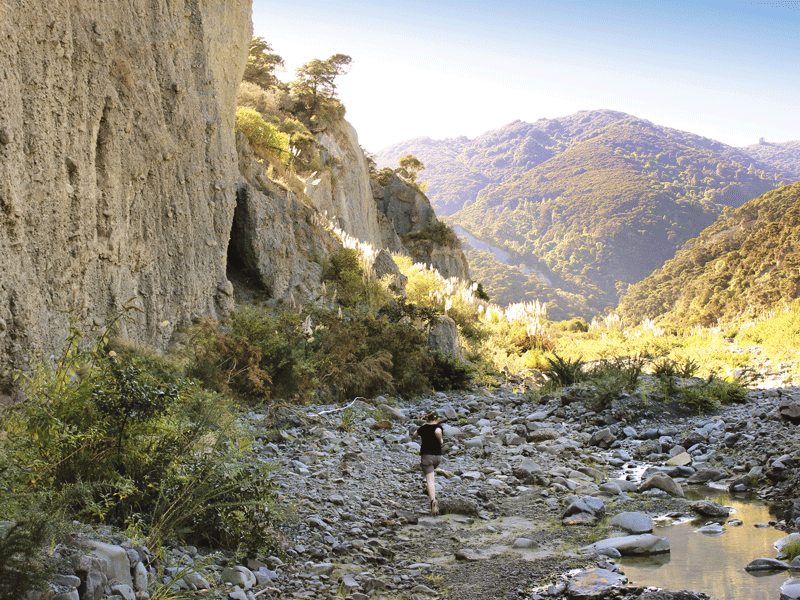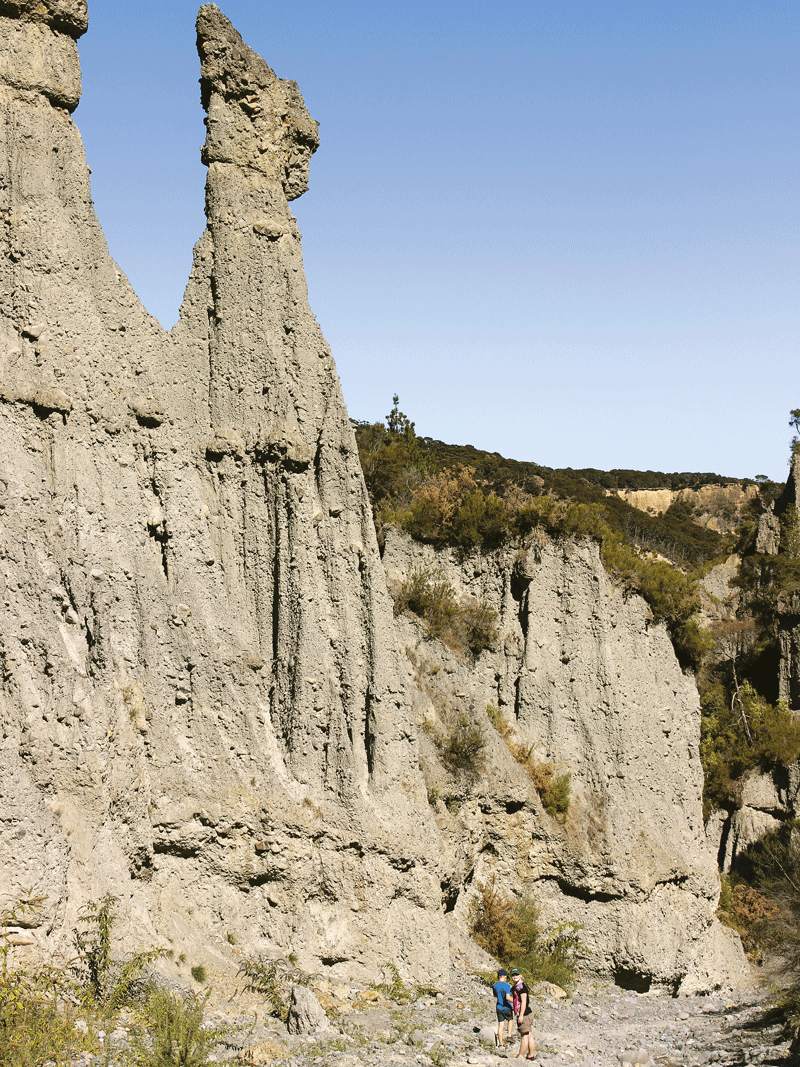The South Wairarapa Coast is a dream for campers, trampers and those who simply love impressive rugged landscapes, lighthouses and seals.
The walk to the Putangirua Pinnacles is a prime attraction for visitors to the region, so when we took the caravan down that way, it was top of our list to explore.
Starting from the Pinnacles Conservation Campsite, the walk takes around two hours return and has the option to return via a loop.
We enticed the kids to join us with the promise of the fascinating geology of the area that–millions of years ago–was once the ocean floor. As it was a long weekend, we shared the walk with a hundred or so other walkers, but it never felt too crowded.
Starting up the river track, the tall valley walls of eroded mudstone gave us a sneak preview of what was to come. After winding our way through the gorse alongside the track we came to a shallow river crossing. The track continued straight ahead but the kids were keen to follow the river and explore the high cliff faces along the river's path. Fossilised shells and remnants of charred wood from ancient forest fires were visible. It was pretty amazing to see what was once a forest now covered in another 30 metres or so of sedimentary rock.
As the river rounded the bend it rejoined the track. Again it meandered along the valley bordered by prickly gorse. A stunning view of a high pinnacle of eroded mudstone appeared, looking like a gargoyle guarding it's castle, but this kept our interest only briefly as we came across one of the most intriguing boulders I have ever seen. A pale orange colour, smooth and rounded, the boulder had a 20cm wide seam of shell fossils running through it. A variety of shell types and shapes were clearly visible and we spent a good twenty minutes studying the boulder.
Just beyond this treasure, the river disappeared into the undergrowth and the track veered to the left into a wide and open gravelly slope. The Putangirua Pinnacles loomed over us, but it was still a bit of a hike up the slope to reach them; a long hot slog on that particular day and one that certainly didn't impress the kids.
We passed a set of signs opposite an obscured track entrance; this was the track to the lookout and return loop to the campsite via the ridge track. Then continuing upwards we came to the first of the deep ravines that make up the Pinnacles; a narrow cleft in the hillside just begging to be explored. In we went, clambering as the slope steepened and squeezing as it narrowed; what a wonderland for adventure.
Retracing our steps out of the ravine, we continued up the hill for another ten minutes until we were surrounded by the collection of eroded towers that make up the Putangirua Pinnacles.
It's a barren and mystical place. The caverns formed by the erosion narrow into passages which can be followed for several hundred metres in some cases. You can see why it's the perfect setting for the filming of the 'Paths of the Dead' sequence in the Lord of the Rings trilogy.
The kids had had enough however, so we started back down the rocky slope, passing other families, groups and individuals along the way.
Abandoning the idea of walking up to the lookout, we backtracked along the riverbed, avoiding the gorse-lined track. With the river being so low we were able to keep our feet dry. I've walked the ridge track on a previous tramp and, despite being a bit of a climb, it's a wide and well-maintained route, making for easy walking.
And so we returned to the caravan, well satisfied with our morning walk. If you have a fascination for geology or just love a dramatic landscape, this is certainly a walk to have at the top of your list.

Wairarapa – what a ripper
Elisabeth Easther signed up for a six-day 300km cycle journey with Green Jersey Tours to ride their Remutaka, Palliser, Tora Tour, and declared the experience gold class.

